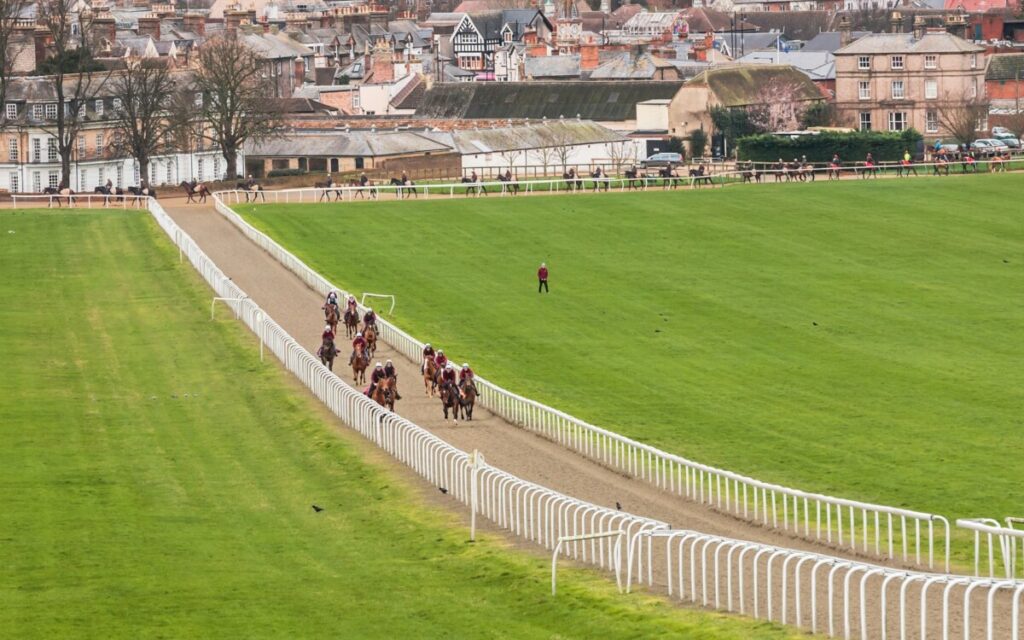 Training a racehorse isn’t just about getting them to run fast. It’s an intricate dance of understanding the individual horse’s personality, optimizing physical conditioning, and perfecting essential racing skills. Here’s an inside look at what it takes to prepare a horse for one of the most prestigious events in horse racing.
Training a racehorse isn’t just about getting them to run fast. It’s an intricate dance of understanding the individual horse’s personality, optimizing physical conditioning, and perfecting essential racing skills. Here’s an inside look at what it takes to prepare a horse for one of the most prestigious events in horse racing.
Understanding Individual Learning Styles
Like humans, each horse has a unique learning style. What works for one horse might not work for another. A great trainer doesn’t just follow a set routine. Instead, they observe the horse’s behavior, identify its strengths and weaknesses, and adapt their training methods accordingly.
Personalized Training: Some horses are naturally lazy in the mornings but come alive in the afternoons. Others might need more time to acclimate to new environments. Recognizing these patterns, trainers create individualized schedules that cater to the specific needs of each horse.
Building Trust: A significant part of training involves building a rapport with the horse. Through consistent and positive interactions, trainers establish trust, making the horse more responsive to commands and training routines.
Mastering the Circle
All horses know how to run, but racing involves more than just running in straight lines – especially in North American races that proceed counter-clockwise. One crucial skill is teaching horses to run in circles efficiently.
Lead Changes: When running, a horse’s legs on one side of the body lead more than the other. For a racehorse, changing leads effectively is essential to conserve energy. Typically, horses will run on their right lead during straightaways and switch to their left lead around turns.
Energy Conservation: By changing leads, horses avoid overworking one set of legs. This skill not only conserves energy but also helps prevent injuries.
Training Techniques: Trainers start by reinforcing these lead changes during routine jogs and gallops. Through repetition and gradual intensification, horses learn to switch leads smoothly and on cue.
Conditioning and Workouts
Just as an athlete prepares for a marathon, racehorses undergo a systematic conditioning process. This ensures they possess the stamina and strength needed to perform at their peak.
Routine Exercises: Training typically starts with simple jogs and gallops early in the morning. These exercises help build a foundation of stamina and muscle strength.
Timed Workouts and Breeze: As the horse’s conditioning improves, trainers introduce more intense workouts. Known as “breezing,” these sessions involve running at a stronger pace for a specified distance and are closely timed to gauge fitness levels. Some trainers prefer fast workouts, while others emphasize a moderate start with a vigorous finish.
The Crucial Starting Gate
The starting gate is a modern innovation in horse racing. Learning to navigate this enclosure is vital for any racehorse.
History and Modern Usage: Before the advent of the electric starting gate in 1939, races began with horses lined up behind a rope or a signal flag. Today, the electric gate ensures a more controlled and fair start.
Getting Accustomed: Training horses to use the gate involves several steps. Initially, horses walk in and out of the stalls. Gradually, they learn to stand within the enclosure for extended periods, both alone and with other horses. The final step is teaching them to start running as soon as the gate opens.
Importance: Proper gate training reduces anxiety and ensures smoother race starts, which can significantly impact performance.
Embracing Research and Technology
Modern racehorse training is also deeply rooted in science and technology. By leveraging research and innovative tools, trainers can better understand and optimize their horse’s performance.
Research Insights: Studies on the musculoskeletal system and racetrack surfaces provide valuable information on how to train effectively while minimizing injuries. More presentations and research topics from institutions like the Grayson-Jockey Club shed light on these factors.
Technology Integration: Advanced technologies, such as biomechanics and surface analysis tools, help trainers design better training programs and improve track conditions. These innovations contribute to more effective and safer training environments.
Conclusion
Training a racehorse involves a blend of science, art, and intuition. From understanding individual learning styles to mastering lead changes and conditioning techniques, every aspect requires meticulous attention. The journey to race readiness is as much about the trainer’s skills and insights as it is about the horse’s natural abilities. As we look forward to seeing these magnificent creatures compete, perhaps even in the bet on 2024 Breeders Cup, it’s worth appreciating the depth of preparation that happens behind the track.
This mix of personalized care, systematic training, and scientific research culminates in crafting racehorses ready to tackle the challenges of the racetrack. Through dedication and expertise, trainers bring out the best in each horse, ensuring they shine brightly on race day.